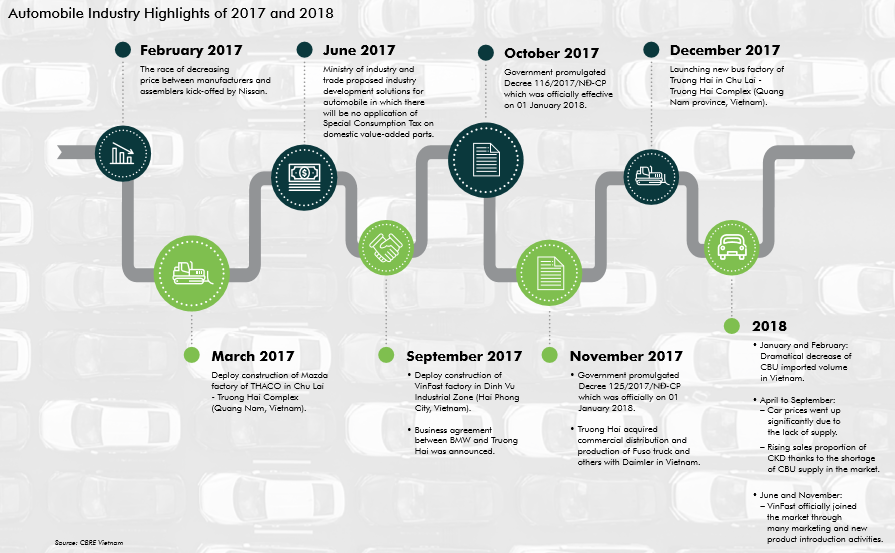The Vietnam Automobile Industry has been expected and most importantly planned to be a spearhead industry for the country’s economy. However, the twenty-year-old industry is still now struggling with the matter of its low localization rate and increasing competion of ASEAN-origin car in the domestic market.
The main reason is that the industry itself cannot develop a firm supportive auto-part-manufacturing foundation despite strong protection and support of central authority. However, recent rapid changes in terms of regulation, policy and international trade agreements have imposed significant impacts on the market.

The Vietnamese government is going the extra mile for their automobile industry. But that solely is not enough. (Illustrative image)
The consumer demand for automobile in Vietnam is driven by favourable macro-economic conditions such as high and stable GDP growth rate as well as growing average income level, rapid improvements in infrastructure, increasing middle and affluent class.
Car demand has been also supported by the improvement of infrastructure. Thanks to the large investment of central authority, a wide and high-end network of express way has been deployed to cut off travelling time as well as connecting economic centers. Notably, the North-South Expressway is currently under phase 1 of an 8-year construction plan, from 2017 to 2025, with a total length of nearly 1,400 km and a total investment capital of approximately VND300,000 billion (US$13 billion).
Most modern express ways are distributed mainly in Hanoi and HCMC surrounding areas. The amount of time spent on going to these big cities from neighboring provinces is reduced dramatically. It is said that the existence of express ways encourages people on living further from their hometown and require a more comfortable mean of transportation. Hence, car is considered as the best option.

Domestic protection of the government in terms of policy and market regulation also plays an important role in developing Vietnam Automobile Industry. Recent changes of government’s policy affect significantly the automobile manufacturing and assembling industry.
Accordingly, the immediate influences have been observed in the market in terms of supply and product’s price. However, the market recorded contrasted figures with the expectations and adjustments of market to the changes occurs quite rapidly.
Since the beginning of 2017, the Vietnam automobile market has witnessed a series of significant events. They are expected to re-shape prospect of the whole industry. In addition, the market’s positive expectations from these events influences has been worth waiting from both consumers, assemblers and distributors.

The most important events were the promulgation of Decree 116/2017/NĐ-CP (Decree 116) and Decree 125/2017/NĐ-CP (Decree 125) in October and November 2017 respectively. Both will take effect starting January 2018.
Decree 116 regulates stricter criteria for manufacturing, assembling and importantly CBU import. According to Decree 116, automobile importers must provide a Vehicle Type Approval (VTA) certification issued by authorities in the exporting country for CBU. Without such a document, a separate certificate of quality, technical safety, and environmental protection of the automobile or engine must be also provided. It is obvious that the Decree 116 set up technical barriers for CBU import which are very difficult to overcome.
Even though Vietnam Automobile Market is a very potential one, the domestic manufacturing industry is still not able to satisfy the very fast-growing demand due to long term major issues such as low localization rate, high production cost and lack of production experience.
Meanwhile, notable regulations of Decree 125 released tax incentives for imported automobile accessories by decreasing import tax rate to 0%. Broadly speaking, these two decrees has been served as protective solutions for domestic automobile industry in term of development policy.
After a twenty-year period of domestic protection, the decree promulgation in 2017 seems to be the most aggressive action of the authority to again boost up an underdeveloped industry.
Accordingly, positive signals can be expected from the implication of these changes not only for the domestic manufacturing industry but also for the consuming market.


















